The following diagrams show the names and positions of notes on the guitar. One of the challenges of learning to play and read music on the guitar is that the same note can often be played in several different positions on the fretboard.
We will cover more on where to play specific passages on the fretboard in a future post. For now it’s more important to develop a thorough knowledge of the fretboard and memorize the note names and positions.
This can seem like a daunting task at first but it will become easier as you progress. Like with anything new and unfamiliar, start by breaking the task up into smaller chunks and don’t try to learn it all in one go.
Diatonic* notes and positions:

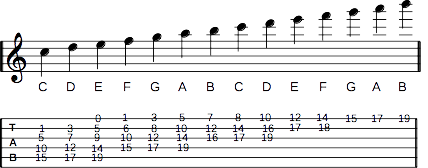
The corresponding fretboard diagrams are:
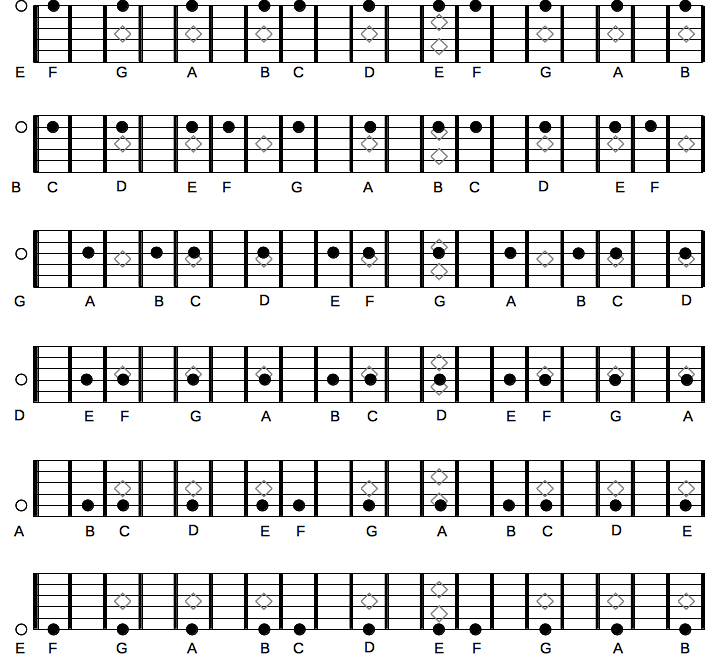
*Diatonic notes are ones that are unaltered by sharps or flats. You can think of these as the white notes on the piano keyboard. The following section covers the chromatic notes that include all note names and positions.
Note: The stacked notes in the tablature notation above should not be interpreted as chords but in this case, as alternative positions for the same notes.
Before we proceed further, we need to define some basic concepts for navigating the fretboard. Moving around the fretboard is described in terms of distance and direction. Distance is defined as the number of steps between a starting note and the next note. This can be done in half steps, whole steps, or longer distances.
A half step on the guitar is the distance between two adjacent frets on the same string. For example, starting on the third fret on a string and moving up one fret closer to the bridge to end on the fourth fret is the distance of one half step. Similarly, starting on the third fret on a string and moving one fret down towards the nut to end on the second fret is one half step:

Moving one half step towards the bridge is referred to as raising a note because it increases the pitch or frequency of the note. Moving a half step towards the nut is referred to as lowering the note because it decreases the pitch or frequency of the note.
A whole step consists of two half steps or the distance between two frets with one fret in between them. For example, moving from the third fret to the fifth fret is a whole step up and moving from the third fret to the first fret is a whole step down:
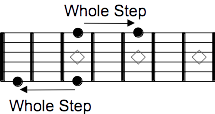
Modifiers are used to indicate when a note is to be raised or lowered by one or more half steps. These modifiers are referred to as “sharps” or “flats”. Another name for these modifiers are “accidentals” or “alterations.” Sharp indicates that a note is raised by one half step and flat indicates that the note is lowered by a half step. For example, a “G sharp” means that the “G” note is raised by one half step and “G flat” means that the “G” note is lowered by one half step:
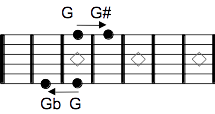
The music symbols for accidentals are: ![]() for sharp and:
for sharp and: ![]()
When written on a music staff, the symbol precedes the note head and when written in a paragraph, the symbol follows the note name, for example:
G![]() or G
or G![]()
For convenience, sometimes the standard hash character ‘#’ is used instead of the sharp symbol and a lowercase letter ‘b’ is used for the flat symbol.
Note names can have synonyms. This means that the same note can be called by different names or represented by different symbols. When two notes have the same pitch but with different names, they are said to be “enharmonic” notes to mean that the two notes are equivalent. For example a C# is the same pitch as a Db. If you play a C# or a Db on the same string, then you end up at the same location and the pitch is the same even though the note can have different names. There are several reasons for using enharmonic names which we will go into later.
The following figures describe enharmonic note names for sharps and flats:
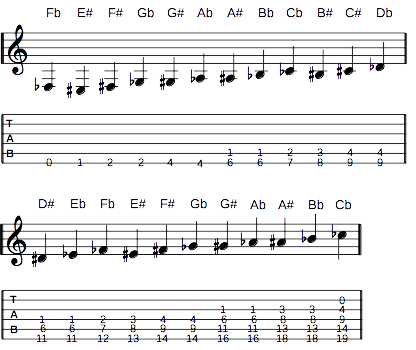
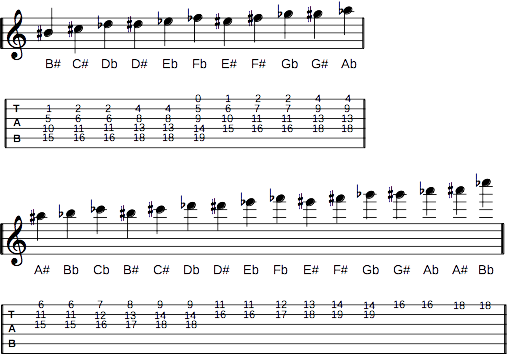
Note: The stacked notes in the tablature notation above should not be interpreted as chords but in this case, as alternative positions for the same notes.
Here are the grid diagrams for all notes (diatonic and enharmonic):
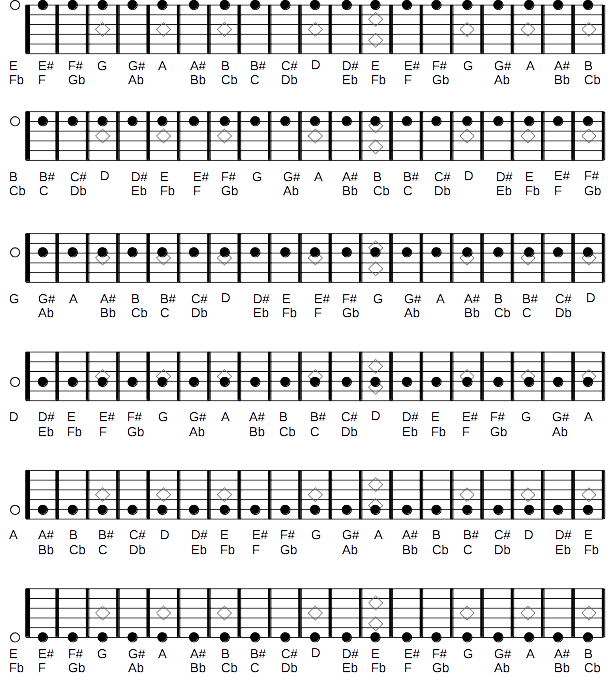
Copyright © 2014 Luis Rojas. All Rights Reserved.